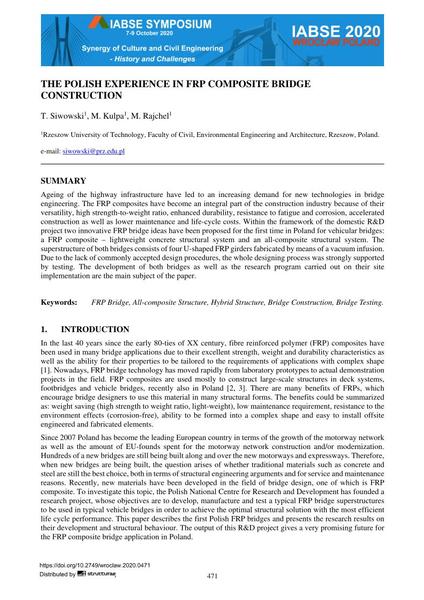The Polish Experience in FRP Composite Bridge Construction

|
|
|||||||||||
Détails bibliographiques
| Auteur(s): |
T. Siwowski
M. Kulpa M. Rajchel |
||||
|---|---|---|---|---|---|
| Médium: | papier de conférence | ||||
| Langue(s): | anglais | ||||
| Conférence: | IABSE Symposium: Synergy of Culture and Civil Engineering – History and Challenges, Wrocław, Poland, 7-9 October 2020 | ||||
| Publié dans: | IABSE Symposium Wroclaw 2020 | ||||
|
|||||
| Page(s): | 471-478 | ||||
| Nombre total de pages (du PDF): | 8 | ||||
| Année: | 2020 | ||||
| DOI: | 10.2749/wroclaw.2020.0471 | ||||
| Abstrait: |
Ageing of the highway infrastructure have led to an increasing demand for new technologies in bridge engineering. The FRP composites have become an integral part of the construction industry because of their versatility, high strength-to-weight ratio, enhanced durability, resistance to fatigue and corrosion, accelerated construction as well as lower maintenance and life-cycle costs. Within the framework of the domestic R&D project two innovative FRP bridge ideas have been proposed for the first time in Poland for vehicular bridges: a FRP composite – lightweight concrete structural system and an all-composite structural system. The superstructure of both bridges consists of four U-shaped FRP girders fabricated by means of a vacuum infusion. Due to the lack of commonly accepted design procedures, the whole designing process was strongly supported by testing. The development of both bridges as well as the research program carried out on their site implementation are the main subject of the paper. |
||||
| Mots-clé: |
construction de ponts
|
||||

